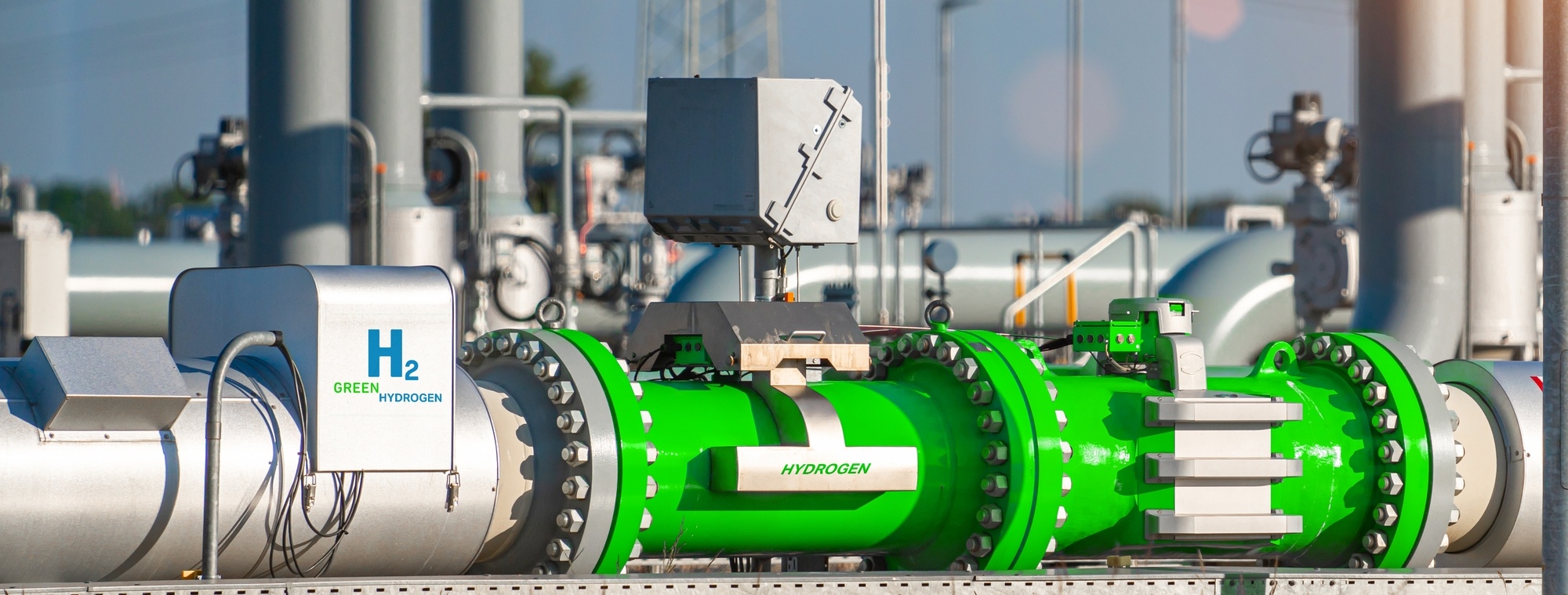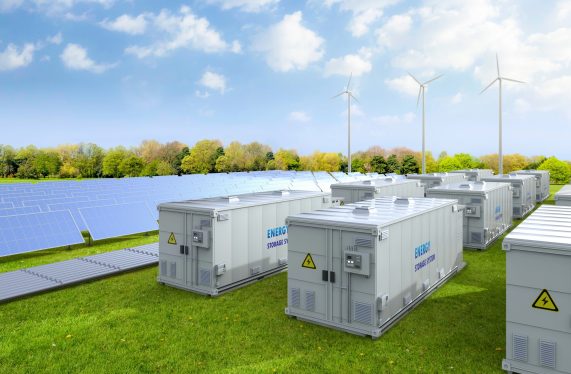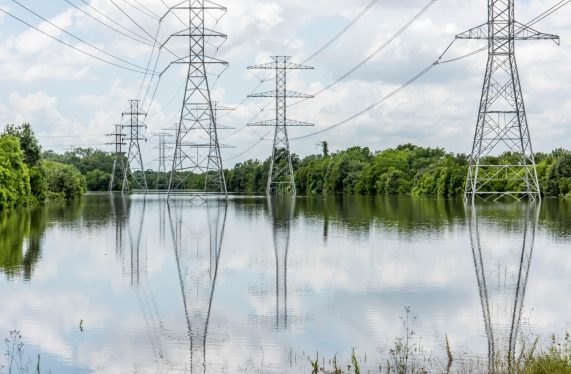Decarbonizing the planet is one of the goals that countries around the world have set for 2050.
Achieving this involves reducing the CO₂ emissions associated with hydrogen production, which currently accounts for over 2% of total global CO₂ emissions.
Green hydrogen, produced using renewable energy sources, offers a solution by generating hydrogen without carbon emissions.
This article provides a comprehensive overview of green hydrogen, its production, applications, current research stage, challenges, and investment potential.
What is Green Hydrogen
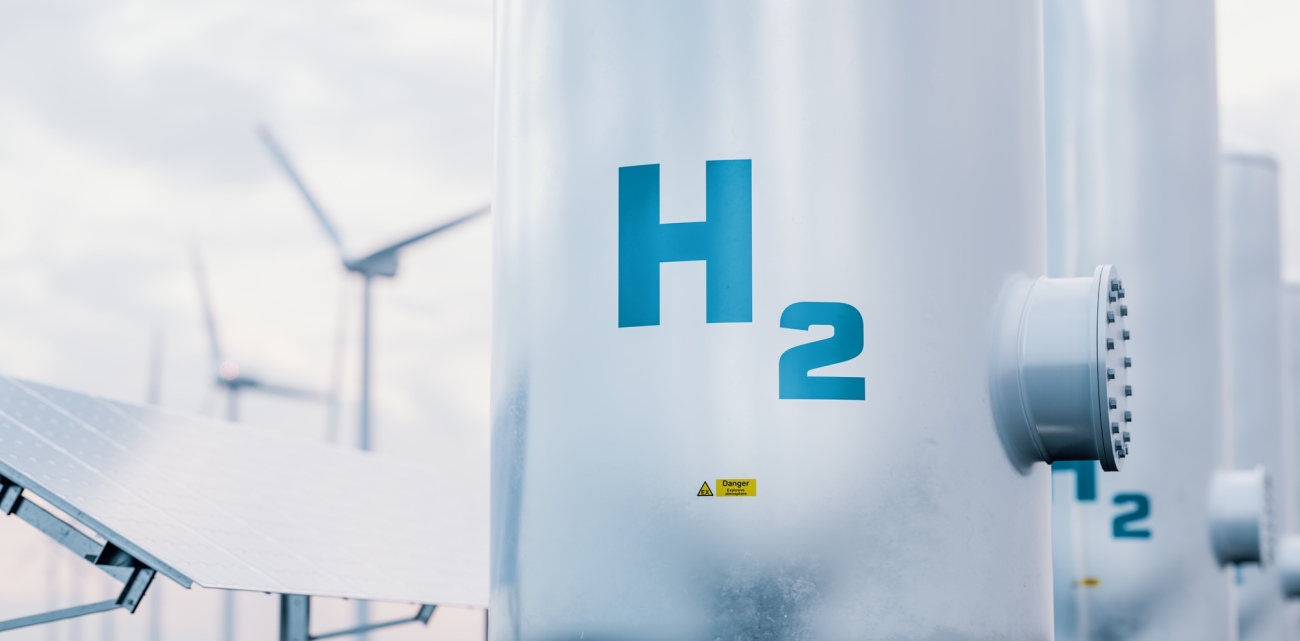
Green hydrogen is
hydrogen produced using renewable energy sources, such as wind, solar, or hydroelectric power.
Unlike conventional hydrogen production methods that rely on fossil fuels, green hydrogen is generated through a chemical process called electrolysis, which splits water into hydrogen and oxygen using electricity from renewable sources.
This method ensures that the hydrogen produced is free from carbon emissions, making it an environmentally friendly alternative.
Types of Hydrogen as Fuel

To fully understand the context of green hydrogen, it is important to recognize the different types of hydrogen based on their production methods and environmental impact.
Here are the primary types of hydrogen:
- Grey Hydrogen: Produced from natural gas through steam methane reforming (SMR), this method emits significant amounts of CO₂, making it the least environmentally friendly.
- Blue Hydrogen: Similar to grey hydrogen but with carbon capture and storage (CCS) to reduce CO₂ emissions. This method still relies on fossil fuels but has a lower environmental impact.
- Green Hydrogen: Produced using electrolysis powered by renewable energy sources. This method generates hydrogen without carbon emissions, making it the most environmentally friendly option.
How is Green Hydrogen Produced
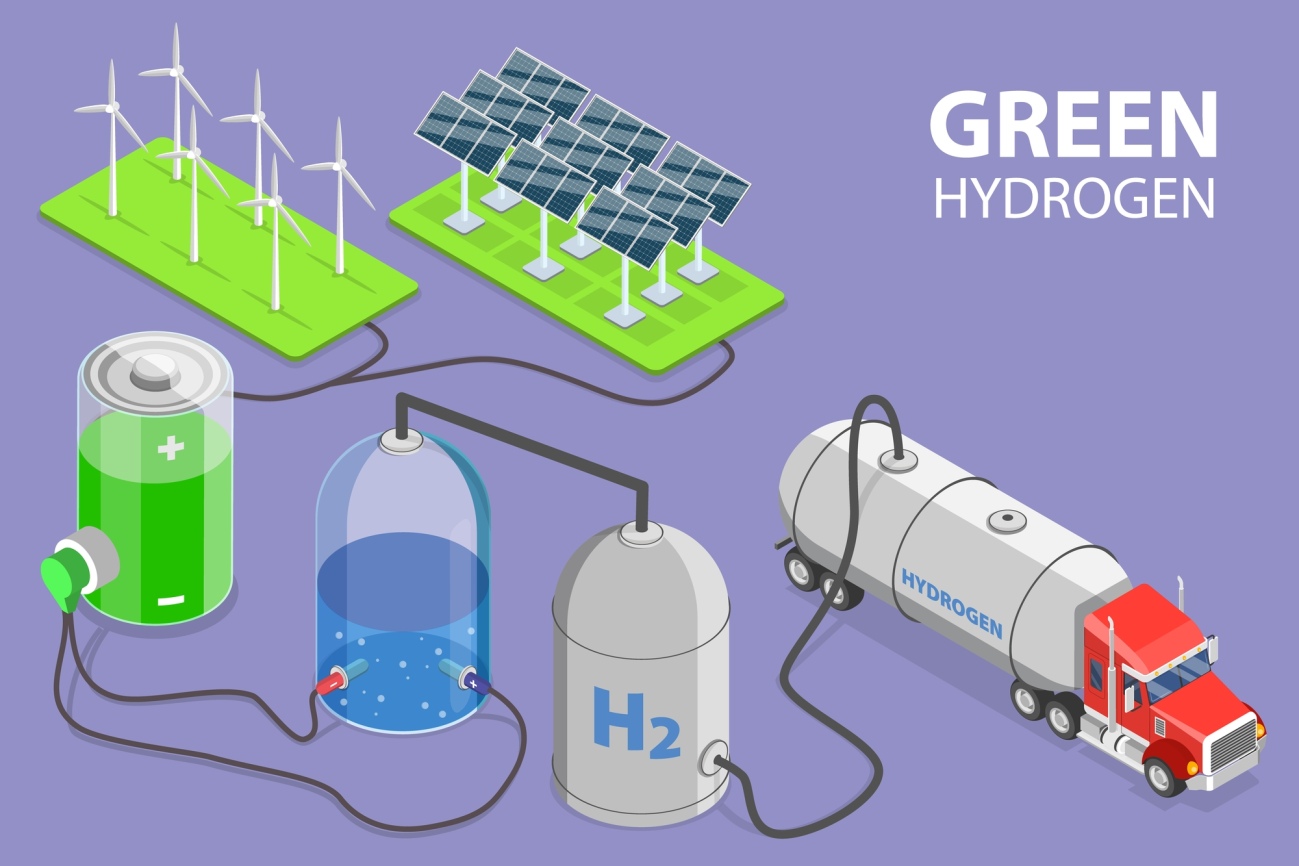
Green hydrogen is produced through the process of electrolysis, which involves the following steps:
- Water Sourcing: Pure water is sourced for the electrolysis process.
- Electrolysis: An electrolyzer uses electricity from renewable sources to split water molecules (H₂O) into hydrogen (H₂) and oxygen (O₂).
- Hydrogen Collection: The hydrogen gas produced is collected, purified and stored for various applications.
- Oxygen Release: The oxygen generated during electrolysis is released into the atmosphere or utilized in industrial processes.
What is Green Hydrogen Energy
Green hydrogen energy refers to the use of green hydrogen as a fuel or energy carrier.
It can be stored and transported efficiently, providing a versatile and clean energy source.
When used in fuel cells or combustion engines, green hydrogen produces only water vapor as a byproduct, eliminating greenhouse gas emissions and air pollutants.
Additionally, hydrogen is used in various non-energy applications across several industries.
The most promising near-term use case for green hydrogen is to replace grey hydrogen in sectors where decarbonization is challenging.
Globally, green hydrogen and its derivatives like ammonia and methanol are being explored for applications in heavy transportation, aviation, marine transport, steel production, chemical manufacturing, and electricity system services such as backup power generation.
How is Hydrogen Used for Energy
Hydrogen can be used for energy in several ways:
- Fuel Cells: Hydrogen fuel cells convert hydrogen gas into electricity, with water and heat as byproducts. This technology is used in vehicles, portable power systems, and stationary power generation, providing a clean alternative to traditional fossil fuels.
- Combustion Engines: Hydrogen can be burned in internal combustion engines, similar to traditional fossil fuels, but without emitting harmful pollutants.
- Energy Storage: Hydrogen can store excess energy generated from renewable sources, providing a solution for energy storage and grid stability.
- Industrial Applications: Hydrogen is used in various industrial processes, including refining, ammonia production, and steel manufacturing.
- Domestic Use: Green hydrogen can also be used for residential heating and power supply, reducing reliance on natural gas and contributing to lower household carbon footprints.
Green Hydrogen: Advantages and Limitations
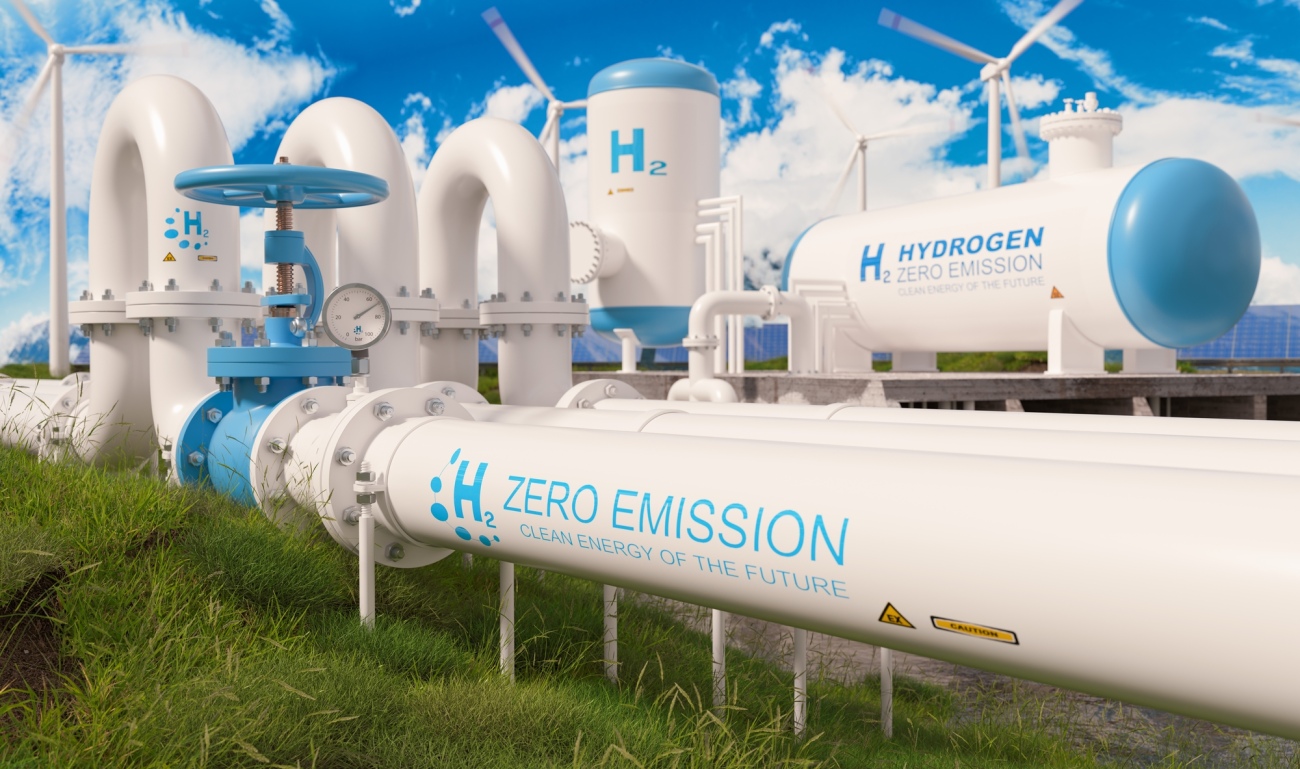
Green hydrogen is a pivotal element in the global shift toward sustainable energy.
Significant research and pilot projects are underway worldwide, yet several challenges must be addressed for widespread adoption.
Advantages of Green Hydrogen
- Sustainability: Green hydrogen production and use do not emit pollutants, making it environmentally friendly.
- Storability: Hydrogen can be stored and used as needed, enhancing energy flexibility.
- Versatility: It can be converted into electricity or synthetic gas for diverse applications in industry, transport, and power generation.
- Dispatchability: Stored hydrogen can provide energy on demand, improving grid resilience.
Challenges of Green Hydrogen
- Production Costs: Producing green hydrogen via electrolysis is currently more expensive than using natural gas. Research focuses on reducing the costs of electrolyzers and improving efficiency.
- Energy Consumption and Renewable Energy Supply: Producing green hydrogen requires significant energy input, impacting overall efficiency. A consistent and sufficient supply of renewable energy is crucial and integrating hydrogen production with intermittent sources like wind and solar poses technical challenges.
- Infrastructure Development: Developing the necessary infrastructure for hydrogen production, storage, and distribution is a significant challenge, including building pipelines, refueling stations, and storage facilities.
- Transportation, Storage, and Safety: Efficiently transporting and storing hydrogen at a large scale remains challenging due to its low density and high flammability. Extensive safety measures are necessary to prevent leakage and explosions.
- Regulatory and Market Support: Clear regulatory frameworks and market incentives are needed to support the growth of the green hydrogen sector. Government policies and subsidies play a vital role in fostering development and adoption.
Is Green Hydrogen Energy a Good Investment?
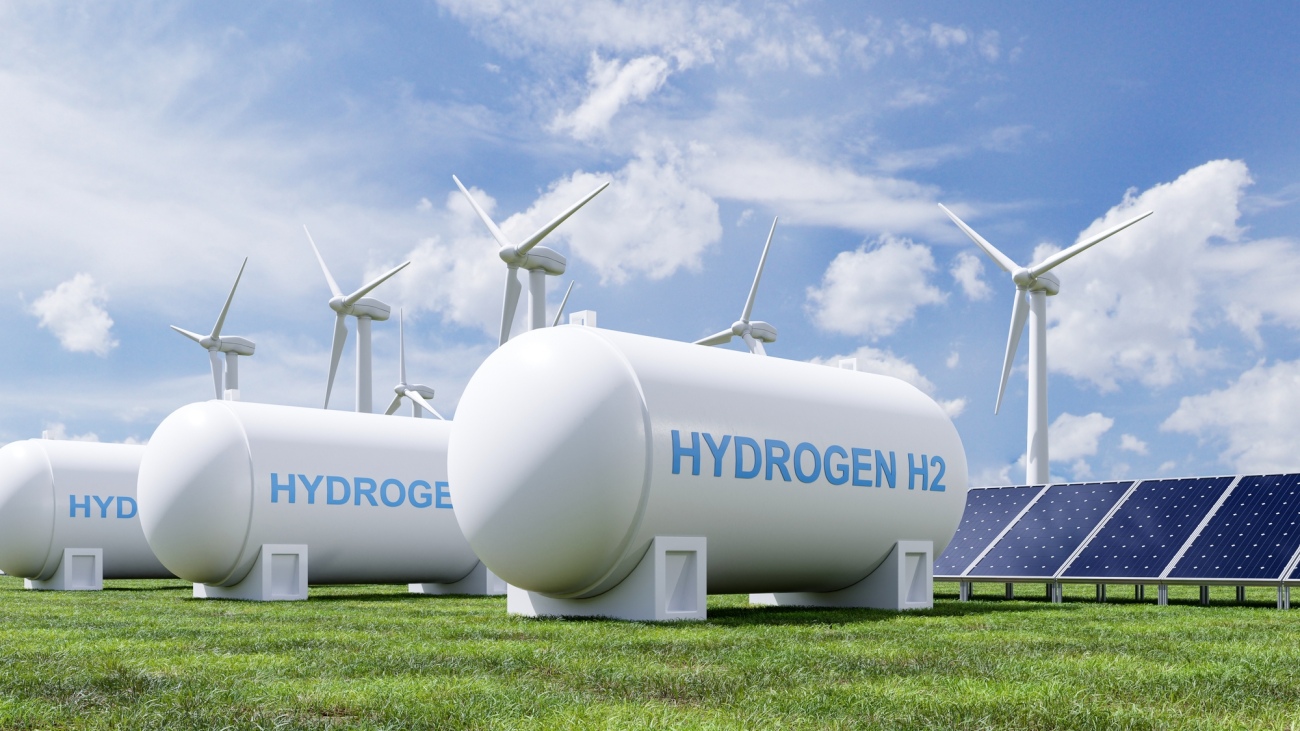
Investing in hydrogen energy presents several promising opportunities.
Green hydrogen has the potential to be used across multiple sectors currently dependent on fossil fuels, making it vital for achieving climate commitments such as those outlined in the Paris Agreement.
Initiatives in Europe are already promoting the hydrogen value chain, including manufacturing competitive electrolyzers, building transport networks, and installing hydrogen fueling stations.
According to the International Renewable Energy Agency (IRENA), hydrogen installation costs could decrease by 40% to 80% in the long term.
Coupled with declining renewable energy prices, green hydrogen is projected to become profitable by 2030.
This suggests a favorable investment climate for green hydrogen, driving the transition to a low-carbon economy and supporting global sustainability goals.
Green Hydrogen in Greece
Greece is positioning itself as a leader in the green hydrogen sector with ambitious plans and strategic initiatives.
The country aims to install 1.7 GW of electrolyzers by 2030 as part of its national hydrogen strategy.
The "White Dragon" project, a major investment in Western Macedonia, seeks to produce green hydrogen using solar energy for district heating, industrial uses, and transportation, with potential exports via the Trans Adriatic Pipeline.
To support these developments, the Greek government is creating a regulatory framework expected to be finalized by mid-2024.
This framework will address certification of renewable hydrogen and its integration into existing energy systems.
Major Greek energy companies are actively participating in these initiatives, demonstrating Greece's commitment to becoming a significant player in the green hydrogen market and contributing to the EU's climate neutrality goals.
These efforts underscore the country's dedication to advancing green hydrogen technology and infrastructure, ensuring a sustainable energy future.
Is Green Hydrogen Energy Our Future?
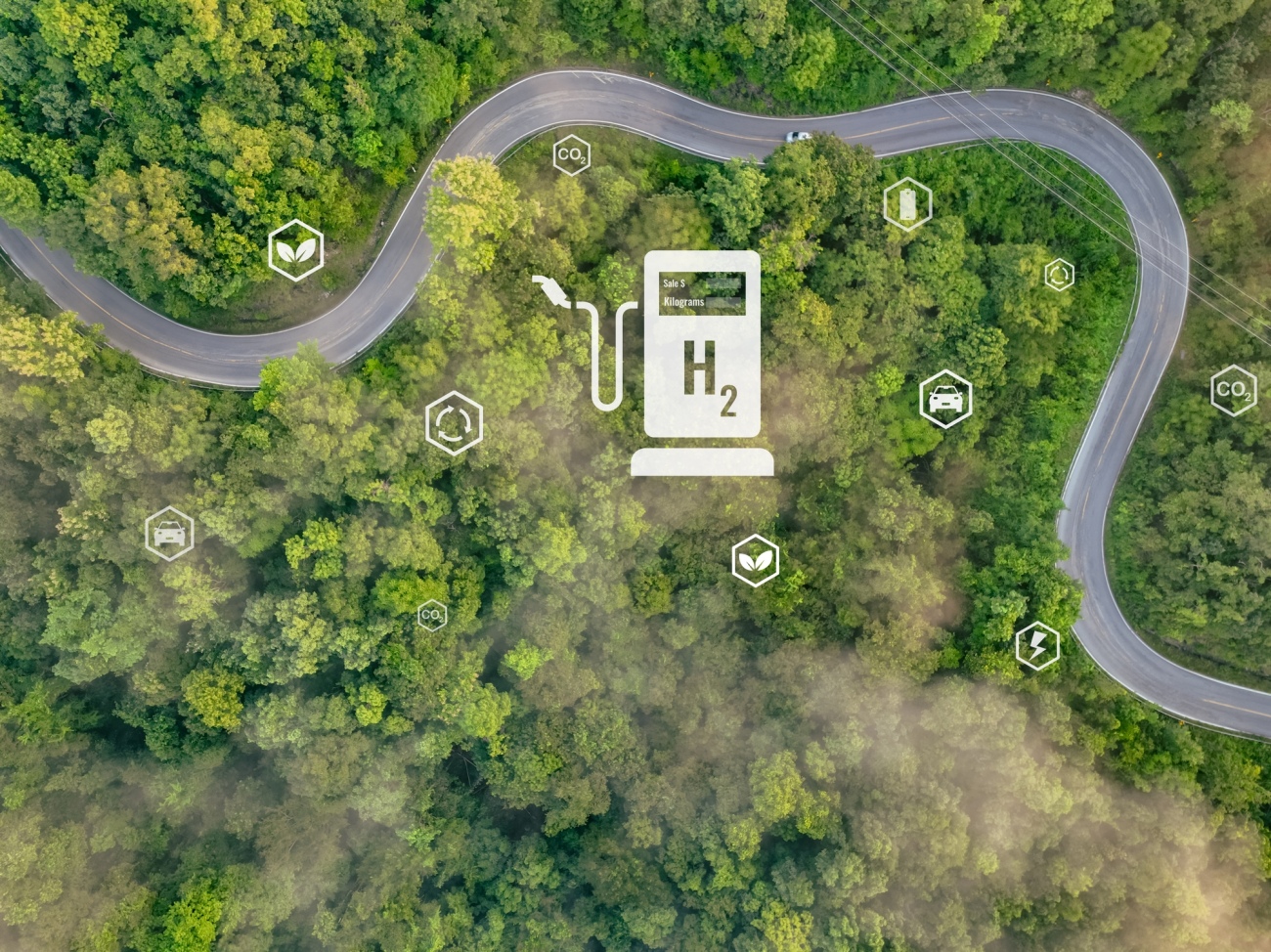
Green hydrogen holds significant promise for the future of energy.
Its potential to provide a clean, versatile, and sustainable energy source aligns with global efforts to combat climate change and achieve energy independence.
As technology advances and infrastructure expands, green hydrogen could play a crucial role in the transition to a carbon-neutral future.
At Synenergy Advisors, we are committed to supporting the development and integration of green hydrogen solutions in energy projects.
By interconnecting renewable energy projects, we contribute to a cleaner, more sustainable energy landscape.
